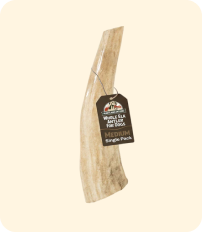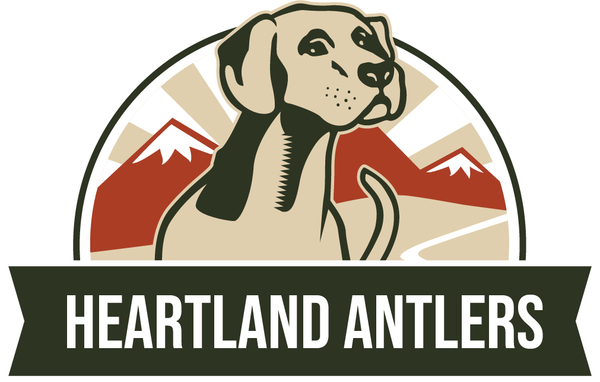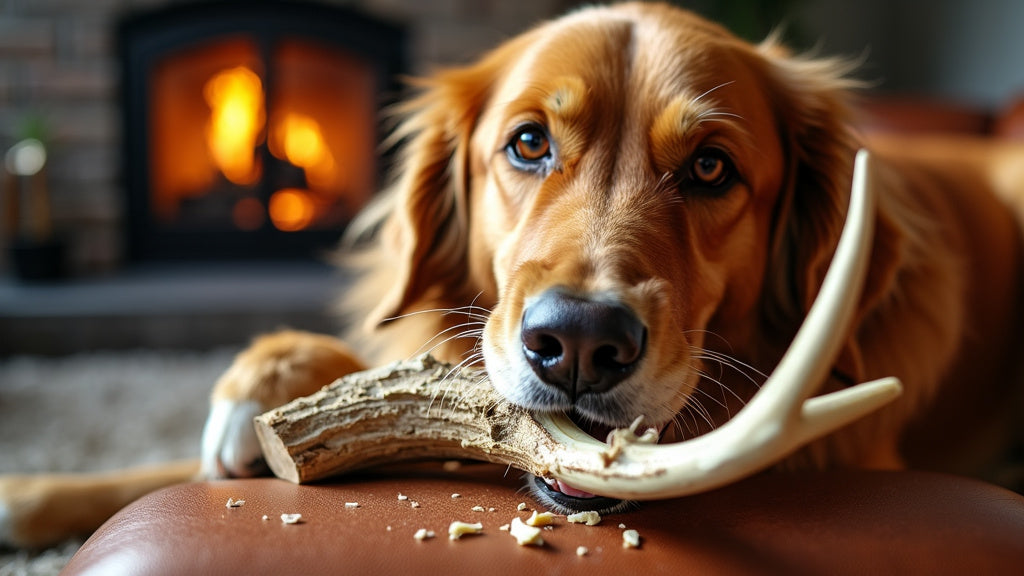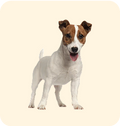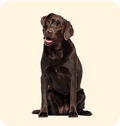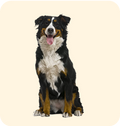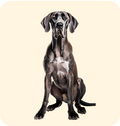Antler chews are popular treats for dogs that offer long-lasting entertainment and potential dental benefits. Here are some key tips to keep your furry friends safe while enjoying these natural chews.
| Key Takeaways |
|---|
|
1. Choose the Right Size and Type
Picking the perfect antler for your dog is crucial. Match the antler size to your dog's size and chewing style. For example, small deer antlers are good for dogs between 5-25 lbs, while giant deer antlers suit dogs over 85 lbs.
Think about your dog's chewing habits too. Softer antlers work well for light chewers, while tougher elk antlers might be better for strong chewers.
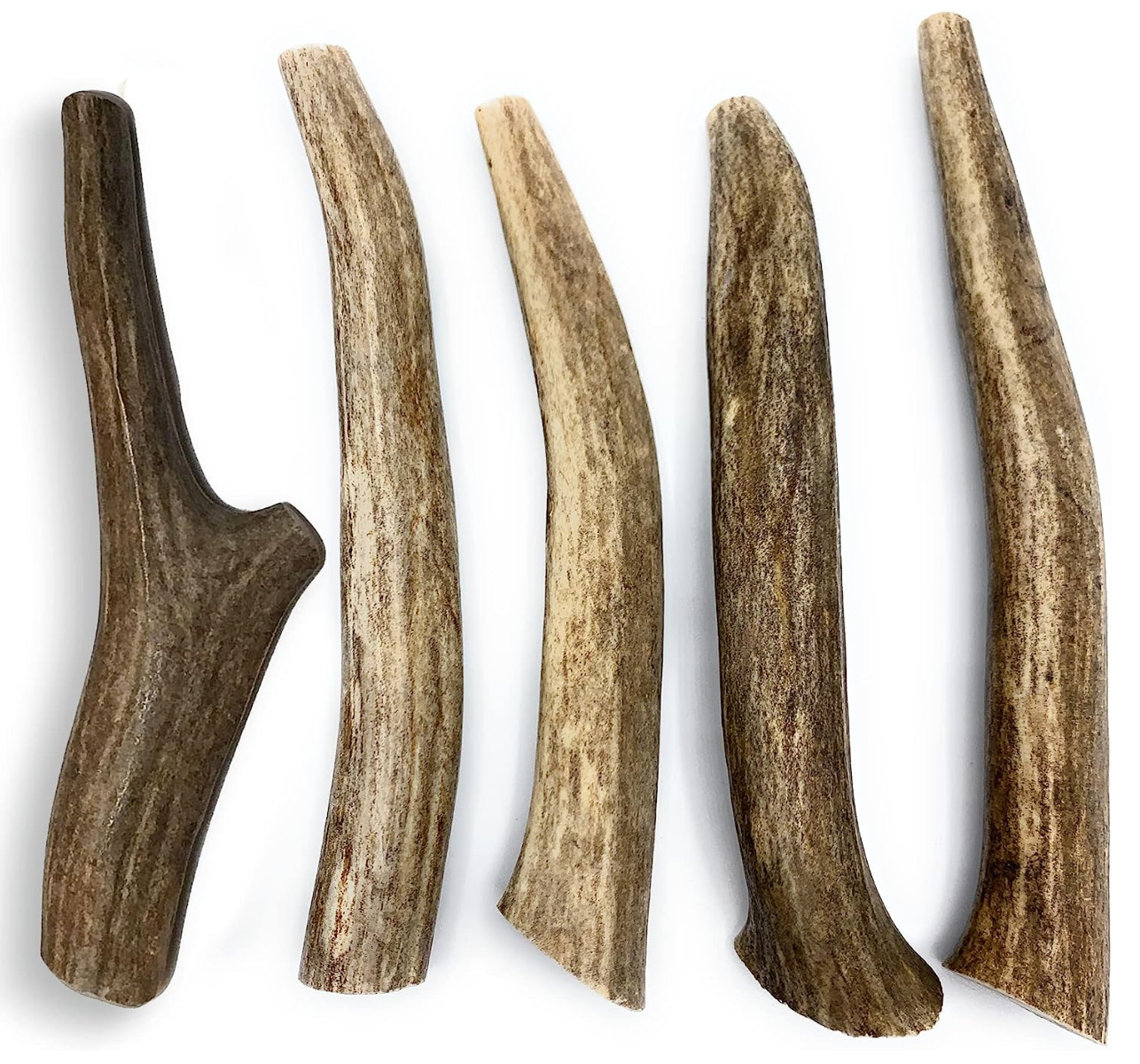
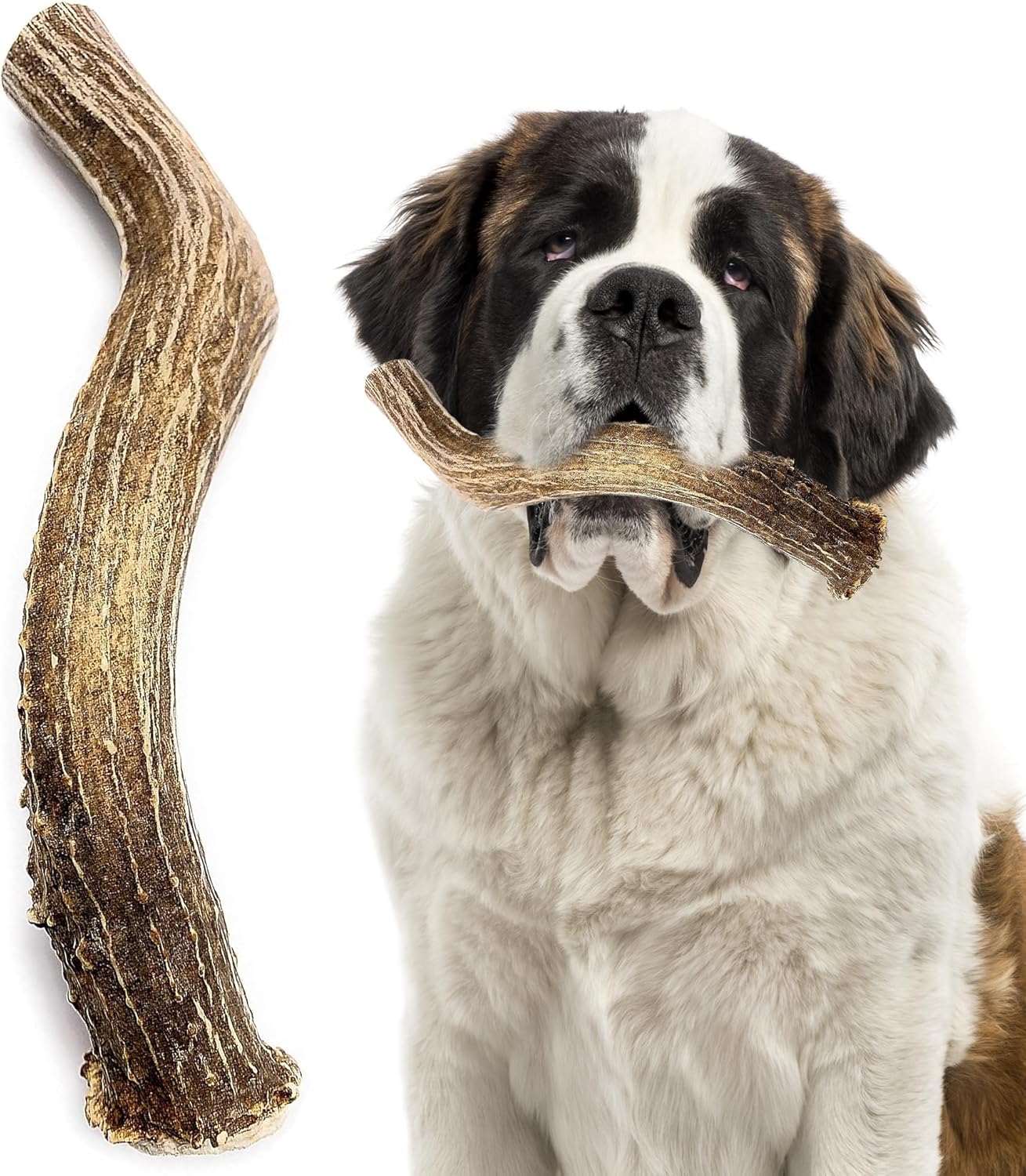
2. Perform the "Kneecap Test"
The "kneecap test" helps check if an antler is too hard for your dog. Press the antler against your kneecap. If it hurts or feels too hard, it's probably too tough for your dog's teeth. This test helps prevent dental fractures.
Our antlers are carefully selected to provide a safe chewing experience. If you're unsure, ask your vet about the right hardness for your dog.
3. Supervise Chewing Sessions
Keep an eye on how your dog interacts with the antler. Are they chewing gently or trying to swallow large chunks? Supervision helps prevent choking hazards and ensures your dog is using the antler correctly.
It's like teaching a kid to ride a bike - you wouldn't just hand them a bicycle and walk away. Your presence can prevent accidents and make the experience safer for your pup.

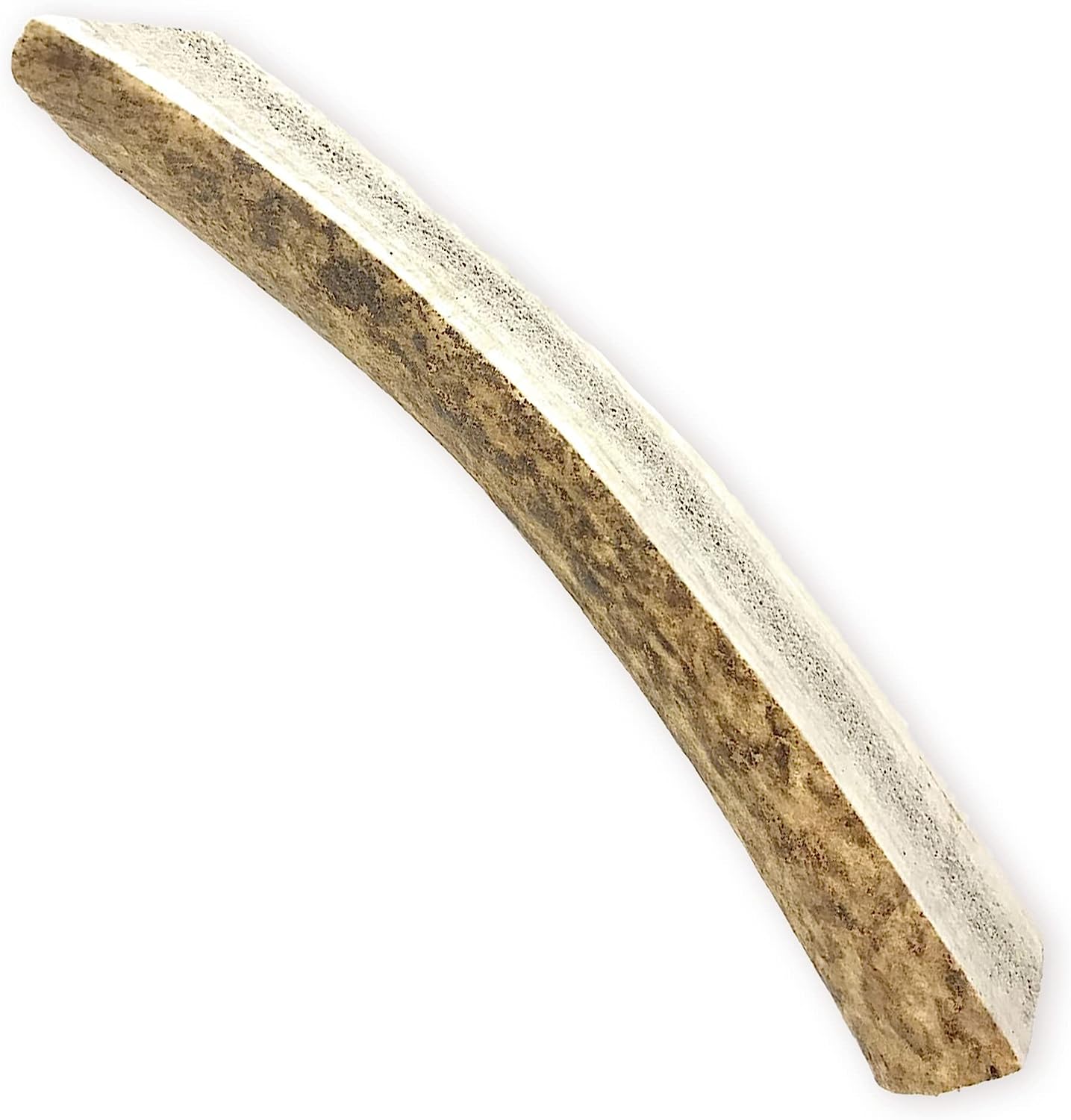
4. Regular Inspection is Key
Regularly check your dog's antler chews. Look for signs of wear and tear, sharp edges, or pieces small enough to swallow. If the antler becomes too small or develops sharp points, it's time for a replacement.
Pay special attention to split antlers, as they can wear down faster than whole antlers. If you notice any splintering or excessive wear, swap it out for a new one.
5. Rotate Chew Toys
Switching between different chew toys, including antlers, can prevent boredom and reduce the risk of overuse. It's like having different games for kids to play - it keeps things interesting.
Our range of antlers, from deer to elk, in various sizes, allows you to mix things up for your dog. This rotation can help distribute wear on your dog's teeth more evenly and provide mental stimulation.

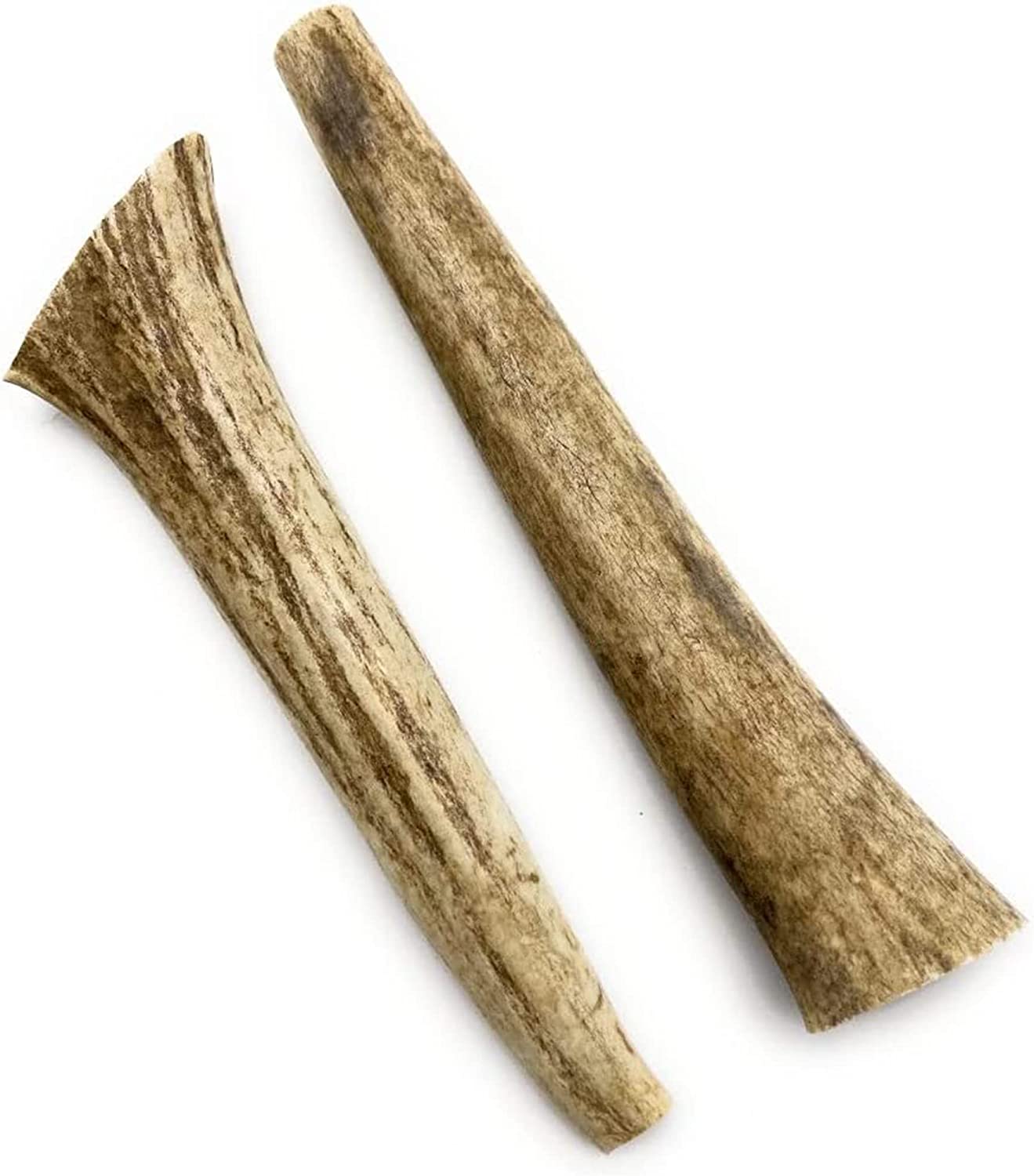
6. Know the Signs of Trouble
Watch out for signs of dental problems like excessive drooling, difficulty eating, or pawing at the mouth. For digestive concerns, look for vomiting, loss of appetite, or tiredness. It's like knowing when your friend has a tummy ache - catching problems early can prevent bigger issues.
If you notice any of these signs, stop using the antler and talk to your vet. While our antlers are natural and safe, every dog is different, so it's better to be careful.
Key Signs to Watch For
- Excessive Drooling: May indicate dental or digestive problems
- Difficulty Eating: Potential sign of dental issues or gastrointestinal problems
- Pawing at the Mouth: Often indicates discomfort or pain, typically dental-related
- Vomiting: Can be a symptom of gastrointestinal issues or intestinal blockages
- Loss of Appetite: May indicate digestive issues or other health problems
- Lethargy: Can be a symptom of various health issues, including digestive problems and dental pain
7. Clean and Store Properly
Keeping your dog's antler clean is important. Rinse it with warm water sometimes to remove dirt and bacteria. Don't use soap, as it might leave something your dog could eat.
Store antlers in a cool, dry place when not in use. This helps keep the antler in good condition and stops bacteria from growing. You could use a special container or drawer to keep chews clean and easy to find.
8. Introduce Antlers Gradually
When giving your dog antler chews for the first time, do it slowly. Start with short supervised sessions, letting your dog get used to the texture and taste. This helps prevent tummy troubles and lets you see how your dog likes to chew.
Begin with 10-15 minute sessions and slowly make them longer as your dog gets used to the antler. This also helps you check if the antler is right for your dog's chewing style.
9. Consider Your Dog's Age and Health
Your dog's age and health are important when deciding if antler chews are okay. Puppies with growing teeth might find antlers too hard, while older dogs with tooth problems may need softer treats. Always ask your vet before giving antler chews, especially if your dog has health issues or tummy problems.
For dogs with sensitive stomachs, start with short chewing times and watch how they react. Some dogs might need to start more slowly to avoid upset tummies.
Conclusion: Safe Chewing for Happy Pups
Antler chews can be great, long-lasting treats for your dog when used safely. By choosing the right size, watching chew sessions, checking the antler regularly, and knowing about possible problems, you can make sure your furry friend enjoys their chew safely for a long time.
Remember, every dog is different. What's good for one might not be good for another. Always ask your vet if you're worried about using antler chews. With these tips, you're on the right track to giving your dog a safe and fun chewing experience.
Want to try antler chews? Check out our high-quality, USA-sourced antler chews to find the perfect match for your dog! We have deer antlers and elk antlers for dogs of all sizes and chewing styles. If you have questions about antler safety or choosing the right one, feel free to contact us.

